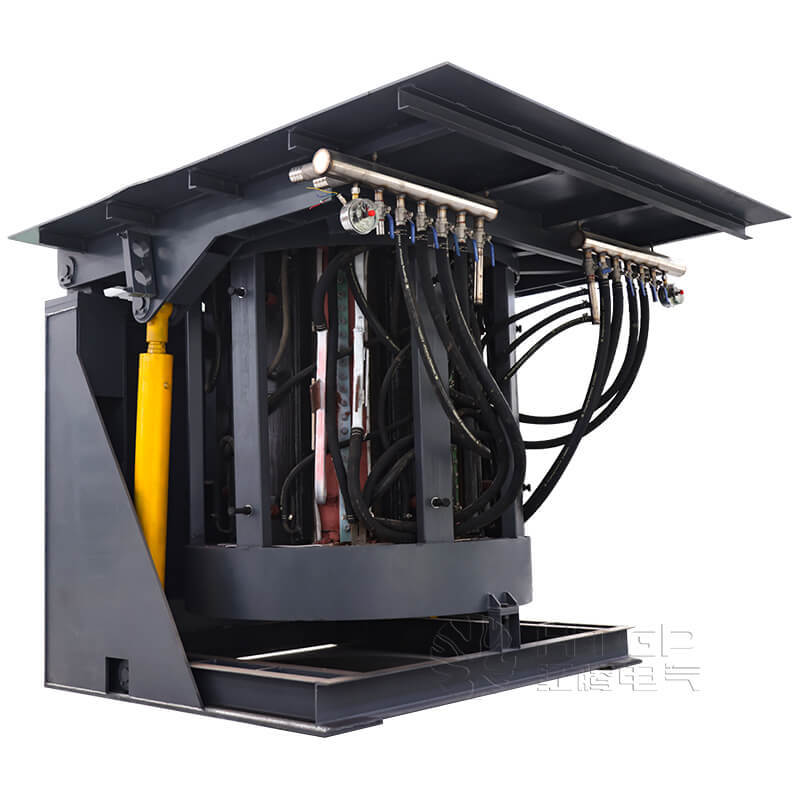vacuum induction melting
Release time:
Mar 31,2025
source:

The charge is melted in a compacted refractory lining crucible. A cylindrical water-cooled copper induction coil is wound around the outside of the refractory lining and generates a pulsating magnetic field in the vertical direction when power is supplied. In order to improve the power factor and reduce the risk of heating the metal by leakage flux caused by coupling of magnetic lines of force with surrounding metal parts, a set of magnetic laminated iron cores that form a loop for the magnetic flux are assembled outside the induction coil.
Induction furnace
The entire furnace is packaged in a rigid mechanical frame and installed to facilitate tilting during pouring. The power frequency coreless induction furnace is mainly used as a remelting device in foundries. It can take a wide range of charge types and can heat the charge to the correct temperature with an accurate composition with no or only a small amount of impurities.
Since the melt is in a liquid state, the interaction between the magnetic lines of force and the current will produce a force that moves the fluid and causes a strong stirring effect. This stirring effect is present throughout the induction melting process. The action of stirring the entire melt pool in a coreless induction furnace is particularly beneficial. This allows a wide variety of charges to be melted economically with minimal loss of precious metal elements. The final melt is homogeneous and can be quickly and easily determined and adjusted.
Coreless induction furnaces allow a wide range of alloys to be melted in the same foundry. At the end of each melt, the furnace can be completely emptied and another alloy can be melted (assuming it is of the same type of refractory lining).
In this chapter, it can be estimated that it is difficult to heat a small piece of metal with industrial frequency. If melting is started from an empty furnace at a frequency of 50 to 60 Hz, it is necessary to provide a "starter" (molten metal scraps) or to heat a larger piece of charge to a molten state before melting the smaller scrap metal. At low frequencies, high currents quickly cause strong agitation, and the stirring action causes the metal to be flooded immediately with little oxidation. Therefore, these furnaces are very effective for melting light scrap metal pieces such as boring chips and cuttings of ferrous or non-ferrous metals.
Coreless Induction Furnace
Since medium frequency furnaces do not require an initial melt, the stirring action is more gentle, and since slag covers can be used to prevent contamination of the molten metal, medium frequency furnaces are more suitable for the production of high-grade steels. The strong stirring action of power frequency furnaces will cause the slag to flood.
High frequency furnaces are often suitable for small induction furnaces for melting experimental quantities of precious metals such as gold, silver and platinum.
Small coreless induction furnaces use a separable crucible, that is, the refractory material is not rammed into the furnace lining and is not part of the furnace. Although this is wasteful, it has the advantage of avoiding contamination when melting special alloys. These furnaces are also called crucible induction furnaces. If a small furnace is to be made without a laminated core, the furnace frame must be made of non-magnetic material.
Furnaces with a frequency of 500 Hz and a maximum capacity of 10 tons without shielding have been made. However, in modern practical operations, they are small furnaces with a capacity limited to 500 kg. All coreless induction furnaces can quickly start melting from an empty furnace and a cold furnace. The lining can be sintered and melted at the same time. Coreless induction furnaces have a higher production capacity than other types of furnaces.
We use optional cookies to improve your experience on our site, including through social media connections, and to serve personalized ads based on your online activity. If you refuse optional cookies, we will only use cookies that are necessary to provide you with the service. Privacy Statement
Leave your inquiry now, and get a systematic solution later.
We will contact you within one working day. Please pay attention to your email.


